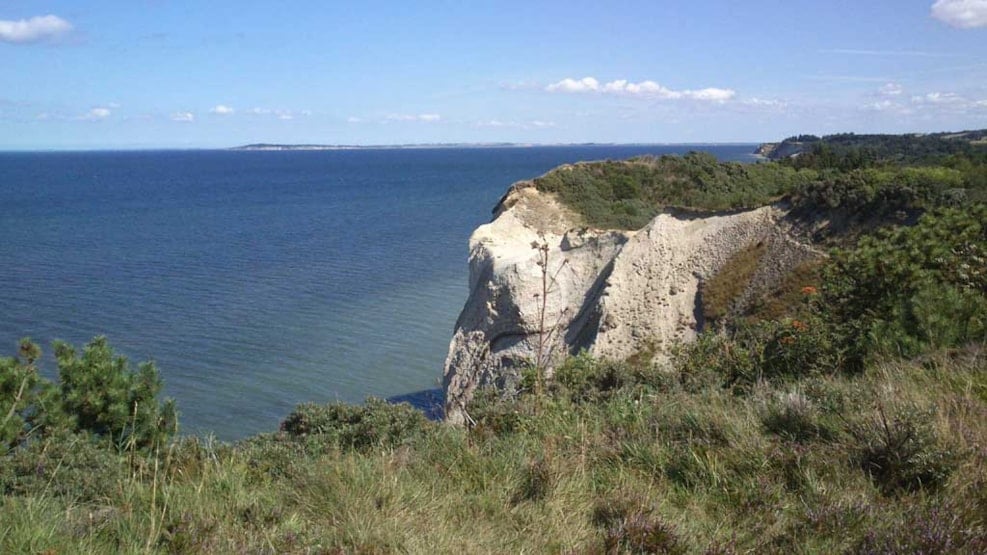
Knudeklinten Northern Fur
Knudeklint on the island of Fur and Hanklit on Mors are candidates for inclusion on UNESCO’s list of unique natural sites.
Within it's modest area of only 22 square kilometres, the island of Fur holds a richness of diverse and characteristic landscapes. Northern Fur is dominated by an east-west situated hill crest, with steep slopes towards Limfjorden.
The landscape on the island of Fur attracts international interest, and the moler landscapes are candidates for the inscription on the UNESCO World Heritage List.
At Knudeklint you get to touch the traces of gigantic volcanic cataclysm that not only reflects the birth of the North Atlantic volcanism, but is also the starting point of modern world life after the exit of the dinosaurs.
With your fingertips gently sweeping over the cliffs you can travel 1.5 million years in 50 meters. In the oldest black clay with white layers of volcanic ash you find yourself set back to 55.5 million years before our time, a warm lush world that would soon be marked by intense volcanism. Traces of the volcanism are seen in the form of the many close-fitting black ash layers in the yellow white moclay. It is a volcanic history that takes us from the first volcanic rift between Norway and Greenland to the continents in drift – From Rift to Drift. A drift that still creates powerful volcanism in Iceland.
So if you find a fossil, it is yet another of those treasured proofs which tells the tale of modern life’s success in the Early Eocene (in Greek Eocene means "new life"). You might also come across fossilized faeces, in Greek called coprolite. It is quite a funny thing that whereas fossils represent the death of an animal, the coprolite witnesses life a long time ago.
So, if you do not find the nation's finest fossil quality, you may be lucky enough to find a rather peculiar coprolite. Try your luck in the fossil hunt with the local geologists of Fur Museum.
- And if you end up being a little dry and dusty, the nearby brewery Fur Bryghus will help you rinse up with the excellent local brew.